Haewoon Kwak
Neural embedding of beliefs reveals the role of relative dissonance in human decision-making
Aug 13, 2024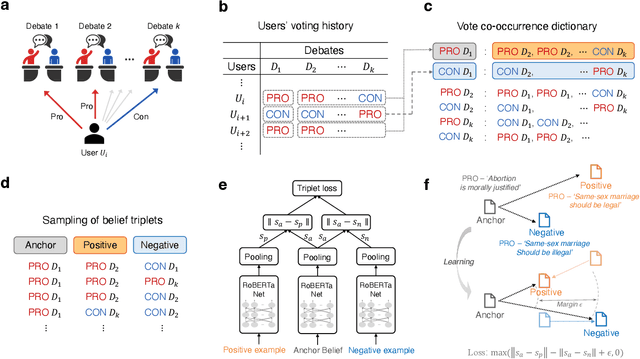
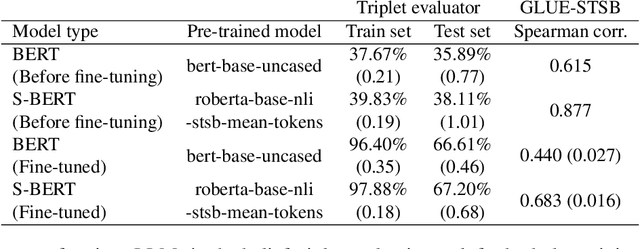
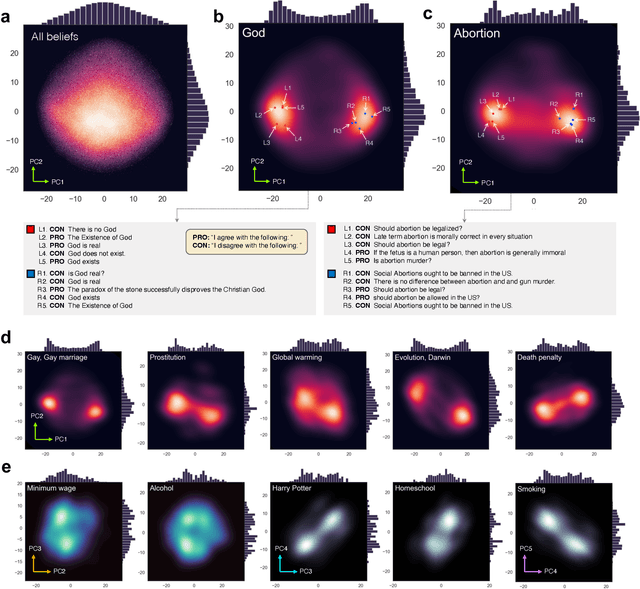
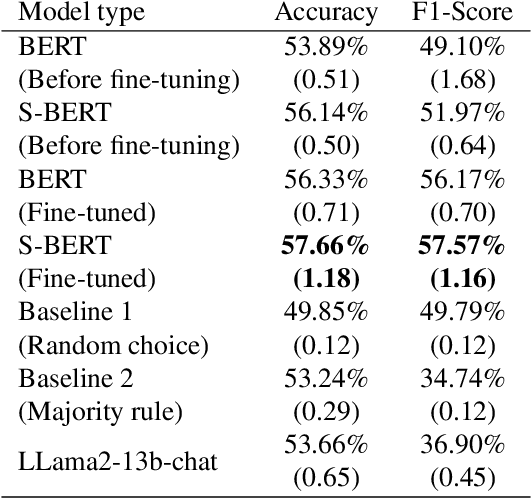
Abstract:Beliefs serve as the foundation for human cognition and decision-making. They guide individuals in deriving meaning from their lives, shaping their behaviors, and forming social connections. Therefore, a model that encapsulates beliefs and their interrelationships is crucial for quantitatively studying the influence of beliefs on our actions. Despite its importance, research on the interplay between human beliefs has often been limited to a small set of beliefs pertaining to specific issues, with a heavy reliance on surveys or experiments. Here, we propose a method for extracting nuanced relations between thousands of beliefs by leveraging large-scale user participation data from an online debate platform and mapping these beliefs to an embedding space using a fine-tuned large language model (LLM). This belief embedding space effectively encapsulates the interconnectedness of diverse beliefs as well as polarization across various social issues. We discover that the positions within this belief space predict new beliefs of individuals. Furthermore, we find that the relative distance between one's existing beliefs and new beliefs can serve as a quantitative estimate of cognitive dissonance, allowing us to predict new beliefs. Our study highlights how modern LLMs, when combined with collective online records of human beliefs, can offer insights into the fundamental principles that govern human belief formation and decision-making processes.
Rematch: Robust and Efficient Matching of Local Knowledge Graphs to Improve Structural and Semantic Similarity
Apr 02, 2024



Abstract:Knowledge graphs play a pivotal role in various applications, such as question-answering and fact-checking. Abstract Meaning Representation (AMR) represents text as knowledge graphs. Evaluating the quality of these graphs involves matching them structurally to each other and semantically to the source text. Existing AMR metrics are inefficient and struggle to capture semantic similarity. We also lack a systematic evaluation benchmark for assessing structural similarity between AMR graphs. To overcome these limitations, we introduce a novel AMR similarity metric, rematch, alongside a new evaluation for structural similarity called RARE. Among state-of-the-art metrics, rematch ranks second in structural similarity; and first in semantic similarity by 1--5 percentage points on the STS-B and SICK-R benchmarks. Rematch is also five times faster than the next most efficient metric.
ChatGPT Rates Natural Language Explanation Quality Like Humans: But on Which Scales?
Mar 26, 2024



Abstract:As AI becomes more integral in our lives, the need for transparency and responsibility grows. While natural language explanations (NLEs) are vital for clarifying the reasoning behind AI decisions, evaluating them through human judgments is complex and resource-intensive due to subjectivity and the need for fine-grained ratings. This study explores the alignment between ChatGPT and human assessments across multiple scales (i.e., binary, ternary, and 7-Likert scale). We sample 300 data instances from three NLE datasets and collect 900 human annotations for both informativeness and clarity scores as the text quality measurement. We further conduct paired comparison experiments under different ranges of subjectivity scores, where the baseline comes from 8,346 human annotations. Our results show that ChatGPT aligns better with humans in more coarse-grained scales. Also, paired comparisons and dynamic prompting (i.e., providing semantically similar examples in the prompt) improve the alignment. This research advances our understanding of large language models' capabilities to assess the text explanation quality in different configurations for responsible AI development.
Benchmarking zero-shot stance detection with FlanT5-XXL: Insights from training data, prompting, and decoding strategies into its near-SoTA performance
Mar 01, 2024



Abstract:We investigate the performance of LLM-based zero-shot stance detection on tweets. Using FlanT5-XXL, an instruction-tuned open-source LLM, with the SemEval 2016 Tasks 6A, 6B, and P-Stance datasets, we study the performance and its variations under different prompts and decoding strategies, as well as the potential biases of the model. We show that the zero-shot approach can match or outperform state-of-the-art benchmarks, including fine-tuned models. We provide various insights into its performance including the sensitivity to instructions and prompts, the decoding strategies, the perplexity of the prompts, and to negations and oppositions present in prompts. Finally, we ensure that the LLM has not been trained on test datasets, and identify a positivity bias which may partially explain the performance differences across decoding strategie
Token-Ensemble Text Generation: On Attacking the Automatic AI-Generated Text Detection
Feb 17, 2024



Abstract:The robustness of AI-content detection models against cultivated attacks (e.g., paraphrasing or word switching) remains a significant concern. This study proposes a novel token-ensemble generation strategy to challenge the robustness of current AI-content detection approaches. We explore the ensemble attack strategy by completing the prompt with the next token generated from random candidate LLMs. We find the token-ensemble approach significantly drops the performance of AI-content detection models (The code and test sets will be released). Our findings reveal that token-ensemble generation poses a vital challenge to current detection models and underlines the need for advancing detection technologies to counter sophisticated adversarial strategies.
Can we trust the evaluation on ChatGPT?
Mar 22, 2023Abstract:ChatGPT, the first large language model (LLM) with mass adoption, has demonstrated remarkable performance in numerous natural language tasks. Despite its evident usefulness, evaluating ChatGPT's performance in diverse problem domains remains challenging due to the closed nature of the model and its continuous updates via Reinforcement Learning from Human Feedback (RLHF). We highlight the issue of data contamination in ChatGPT evaluations, with a case study of the task of stance detection. We discuss the challenge of preventing data contamination and ensuring fair model evaluation in the age of closed and continuously trained models.
Wearing Masks Implies Refuting Trump?: Towards Target-specific User Stance Prediction across Events in COVID-19 and US Election 2020
Mar 21, 2023



Abstract:People who share similar opinions towards controversial topics could form an echo chamber and may share similar political views toward other topics as well. The existence of such connections, which we call connected behavior, gives researchers a unique opportunity to predict how one would behave for a future event given their past behaviors. In this work, we propose a framework to conduct connected behavior analysis. Neural stance detection models are trained on Twitter data collected on three seemingly independent topics, i.e., wearing a mask, racial equality, and Trump, to detect people's stance, which we consider as their online behavior in each topic-related event. Our results reveal a strong connection between the stances toward the three topical events and demonstrate the power of past behaviors in predicting one's future behavior.
Is ChatGPT better than Human Annotators? Potential and Limitations of ChatGPT in Explaining Implicit Hate Speech
Feb 11, 2023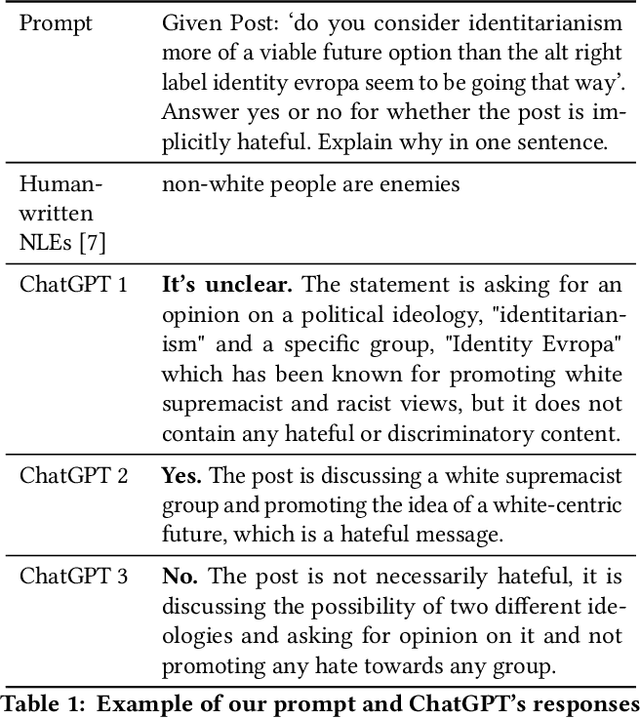
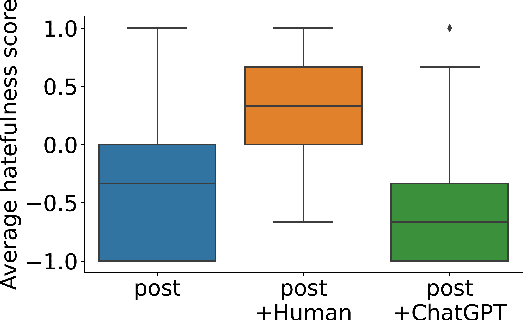
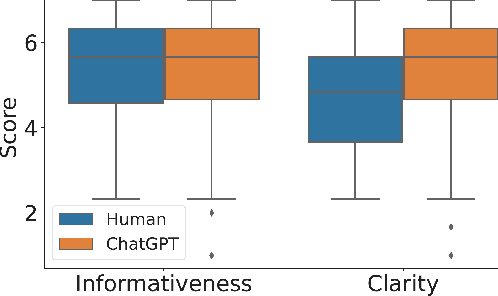
Abstract:Recent studies have alarmed that many online hate speeches are implicit. With its subtle nature, the explainability of the detection of such hateful speech has been a challenging problem. In this work, we examine whether ChatGPT can be used for providing natural language explanations (NLEs) for implicit hateful speech detection. We design our prompt to elicit concise ChatGPT-generated NLEs and conduct user studies to evaluate their qualities by comparison with human-generated NLEs. We discuss the potential and limitations of ChatGPT in the context of implicit hateful speech research.
Chain of Explanation: New Prompting Method to Generate Higher Quality Natural Language Explanation for Implicit Hate Speech
Sep 11, 2022



Abstract:Recent studies have exploited advanced generative language models to generate Natural Language Explanations (NLE) for why a certain text could be hateful. We propose the Chain of Explanation Prompting method, inspired by the chain of thoughts study \cite{wei2022chain}, to generate high-quality NLE for implicit hate speech. We build a benchmark based on the selected mainstream Pre-trained Language Models (PLMs), including GPT-2, GPT-Neo, OPT, T5, and BART, with various evaluation metrics from lexical, semantic, and faithful aspects. To further evaluate the quality of the generated NLE from human perceptions, we hire human annotators to score the informativeness and clarity of the generated NLE. Then, we inspect which automatic evaluation metric could be best correlated with the human-annotated informativeness and clarity metric scores.
Who Is Missing? Characterizing the Participation of Different Demographic Groups in a Korean Nationwide Daily Conversation Corpus
Apr 20, 2022



Abstract:A conversation corpus is essential to build interactive AI applications. However, the demographic information of the participants in such corpora is largely underexplored mainly due to the lack of individual data in many corpora. In this work, we analyze a Korean nationwide daily conversation corpus constructed by the National Institute of Korean Language (NIKL) to characterize the participation of different demographic (age and sex) groups in the corpus.
 Add to Chrome
Add to Chrome Add to Firefox
Add to Firefox Add to Edge
Add to Edge